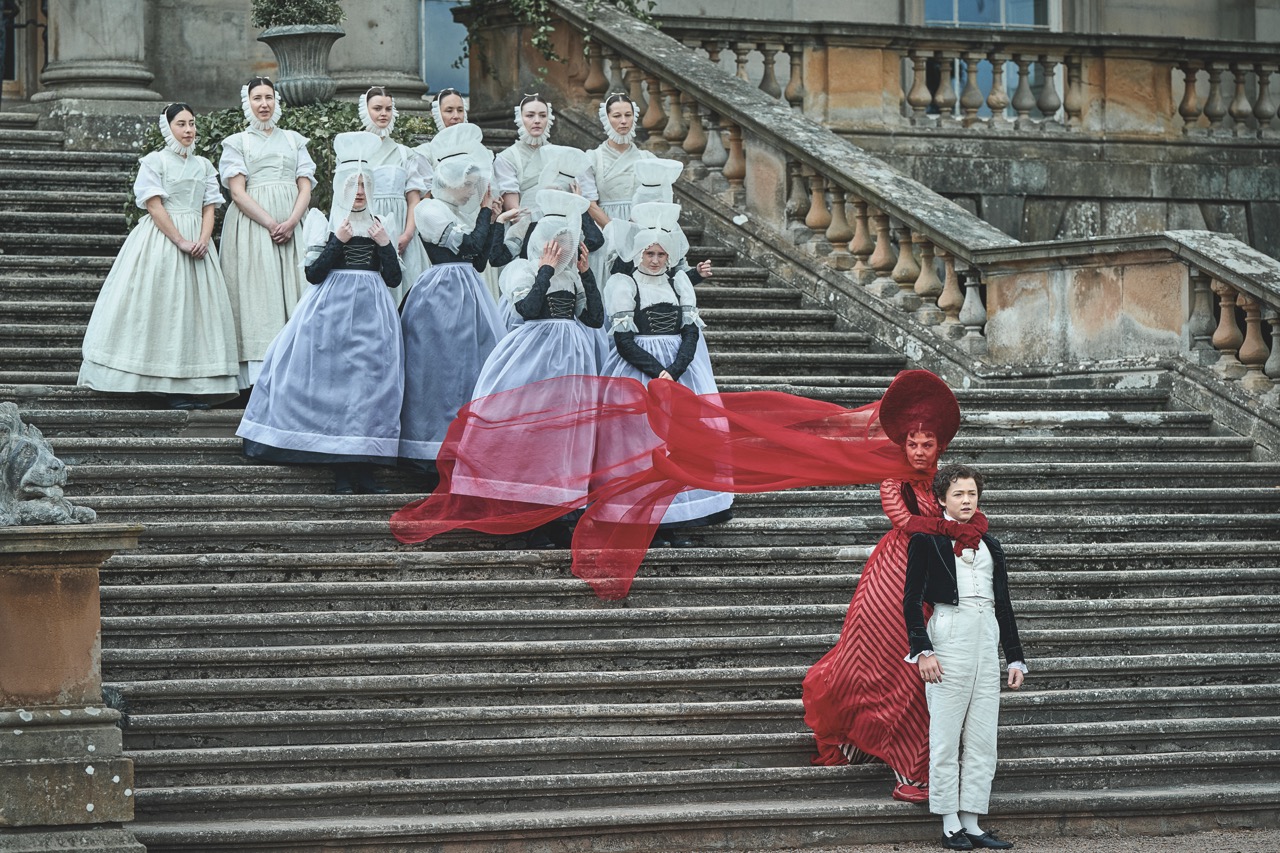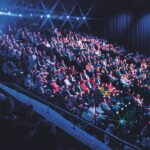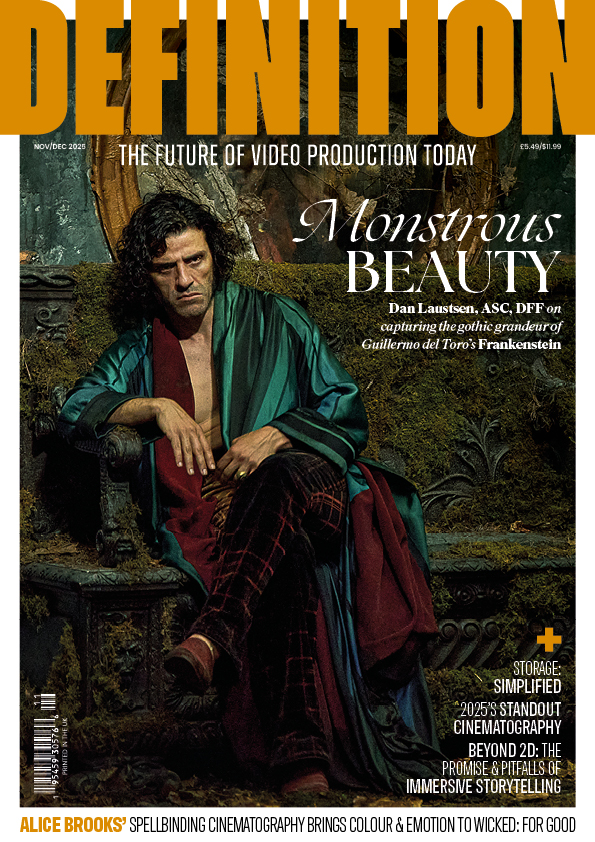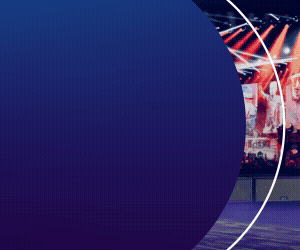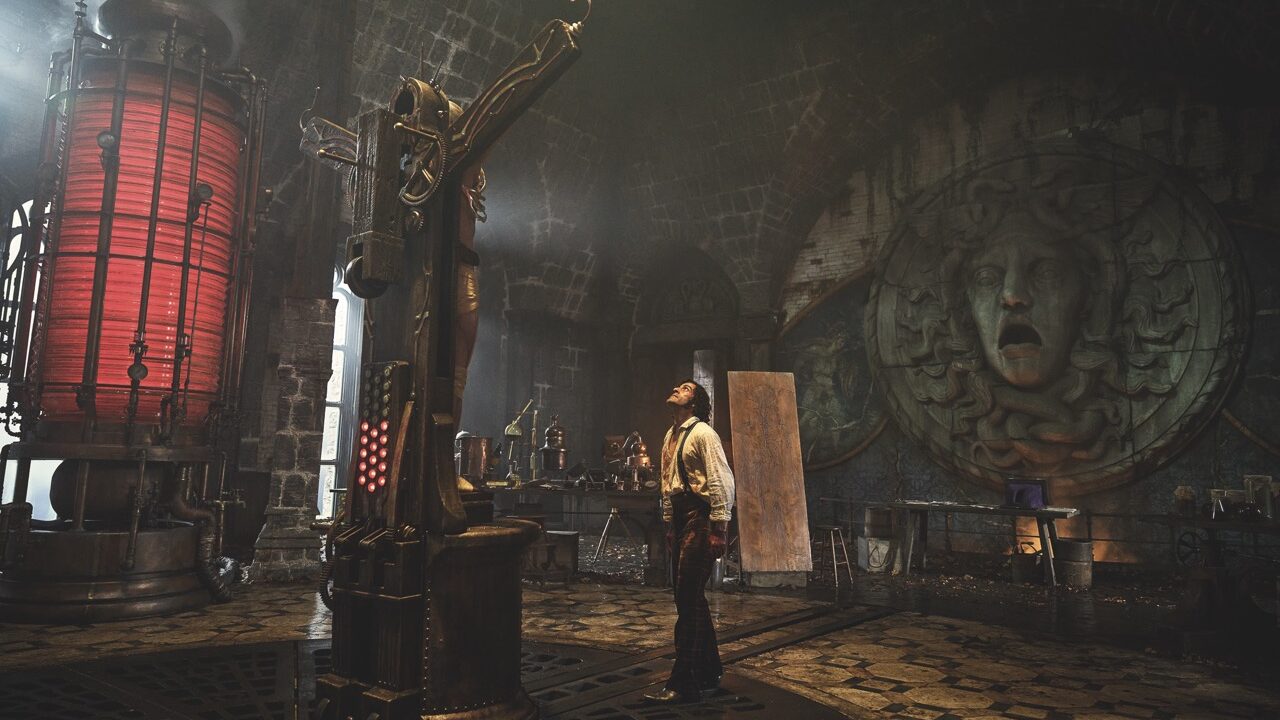
Production: Frankenstein
Posted on Nov 14, 2025 by Admin
DOP Dan Laustsen, ASC, DFF talks painting with light in Frankenstein, his latest collaboration with Guillermo del Toro
Words Oliver Webb | Images Netflix
Adapted from Mary Shelley’s 1818 novel Frankenstein; or, The Modern Prometheus, Guillermo del Toro’s Frankenstein follows an egotistical scientist and his attempts to bring a monstrous creature to life. This marks del Toro’s fifth collaboration with Dan Laustsen, ASC, DFF, having previously collaborated on Mimic (1997), Crimson Peak (2015), The Shape of Water (2017) and Nightmare Alley (2021).
Director del Toro had been discussing the idea of adapting the novel with Laustsen as early as Crimson Peak. “After The Shape of Water, he told me he was writing the screenplay,” begins Laustsen. “I read the book and it’s a really great story, but then I read the screenplay and it was totally different. It shouldn’t have surprised me, this is Guillermo del Toro and the way he looks at stuff is great.”
Gothic Worldbuilding
During the early stages of production, Laustsen looked at the work of Danish painter Vilhelm Hammershøi. “His paintings have this very classic single-source lighting from the windows,” he says. “We didn’t really talk about other movies,” he admits, except for Kubrick’s Barry Lyndon (1975). ”We were shooting in some of the same locations it used and it’s a masterpiece, so we thought why not look at it? I’m sure Guillermo had lots of other references, but we wanted to make our own world.”
Del Toro and Laustsen wanted to make a period movie, without it looking like a period movie. “We wanted to take a more modern approach. We had lots of early discussions about that and about moving the camera more than we’d done before. The takes in this movie were much longer and all the sets and shots were less designed than in The Shape of Water. We were a little bit looser in the camerawork, although it is still very precise. I think that’s great for the story and for the actors. The lights and movement should be very precise, but also a little bit loose on the other hand.”
Playing with colour
Lighting was an integral part of the discussions, with Laustsen and del Toro preferring single light sources. They wanted to keep practical fixtures out of the frames as much as possible. Laustsen cites the ship sequences as an example of this. “We have all the soldiers holding torches when they’re standing. We like light when it’s organic and moving around. We did speak about whether or not live action flame torches would be too dangerous, but I fought very hard for them because when the wind and light is changing, they look organic and really beautiful in the light.”
Laustsen tested using candles to light the older sets, though he admits candlelight can get too soft. He used candles within the frame, but relied on light fixtures and fire effects for the key lighting. “Half of our fire effects were visual effects,” he says. “For example, if I am putting a light into the chimney or the fireplace, our visual effects supervisor Dennis Berardi is putting a flame on top of that light. We were cheating a lot in that sense.”
In terms of practical lighting fixtures, Laustsen resorted to old-fashioned lights. “We had big lights outside the windows: 24K Raptors and 24K Dinos. We used more tungsten light in the studio,” he details. “We had LED lights as well. On location, you have to work with where you are and so some of those were led with tungsten and some HMI. I’m never using HMI in the studios, however. If I need steel blue, then I put steel blue on the lights at the studio. The locations are always another discussion because you are fighting the sun, the weather and the elements. It’s a challenge, but when you have time to do it right it looks really nice.”
Laustsen is no stranger to steel blue, having frequently used the colour across his other films. “We attempted to escape from steel blue colours, but we love it so much,” he says. “It works so well with the ambers and golds and so we returned to it again. We tried to get away from it but couldn’t, and it works so well in this movie. Red was another important colour and element in the flashback sequences with Frankenstein’s mother, it’s very distinctive with her dress and the blood.”
The sets, creature, costume design, hair and makeup and the overall colour palette were meticulously planned down to the smallest details. “We were not going to change the colour in post,” says Laustsen. “Our dailies and the final movie are very alike. We’re not making it warmer or colder because if you do that then the whole colour palette is sliding to another side. We shot a lot of tests during pre-production to make sure we had the right colour on both the costumes and sets.
If, for example, our costume designer Kate Hawley is making a green dress and I’m lighting it with red, then it’s going to 100% change. We tried to be very specific about the colour palette for each scene, but I don’t do a LUT.”
Old tricks
Laustsen opted to shoot the entire film on ARRI ALEXA 65, accompanied with Leitz THALIA 65 lenses. “For the last few years, we’ve shot ALEXA 65 on remote heads and then LF on the Steadicam. We used 95% of the sensor, so we had 5% crop for the visual effects. I really love the ALEXA 65 because I like the big sensor combined with the tighter lenses, but sometimes it gets a little too sharp.”
To resolve this, Laustsen shot with a diffusion filter inside the camera. “I had the filter behind the lens and that burns the highlight out beautifully. If you put a diffusion filter in front of the lens you get a filter flare instead of a lens flare, which makes a big difference. Our lenses were 24mm and you can get really nice close-ups with that. It’s not a super wide angle because the sensor is big, but it is a beautiful lens as it doesn’t distort and has a wonderful depth-of-field fall-off in the close-ups.”
Laustsen is particularly proud of the scene when the creature sees the sun for the first time after Frankenstein opens his bedroom’s blinds. “That’s a very romantic scene with lots of flare and light coming through the window,” he explains. “There were lots of times when we shot directly into lights like that.”
To capture the underwater sequences, Laustsen relied on an age-old theatre trick that he’d previously used in The Shape of Water. “You fill a stage with lots of smoke,” he says. “Then you have a film projector hanging and shooting straight down with a gobo that makes it look like there’s water moving around. There’s no water there at all, it’s 100% smoke with light moving around. On top of that, you have a small wind machine in order to make the characters’ clothes move a little and you are shooting high speed. We fell in love with it during The Shape of Water. It does look a little artificial but somehow also real. And the actors aren’t restricted because there’s no water: it’s an old gag from the theatres.”
The shoot lasted around a staggering 105 days. “We shot in Toronto for a very long period of time, then Guillermo and I went to London to do some of the lab scenes, which was a more miniature shoot. We then went to Scotland with another team as well. Frankenstein’s house consisted of five or six different locations and that was a challenge to keep the same feeling and colours going from one frame to another to make it look like it’s all the same location.”
Laustsen enjoyed reuniting with del Toro. “It’s like coming back to your brother,” he concludes. “This was a very visual story and although I like to be in the studio controlling everything, the locations on this film were fantastic. You just cannot build those locations. Guillermo has been dreaming of making this film his whole life, so it felt like I was doing something very special.”
This story appears in the November/December 2025 issue of Definition


